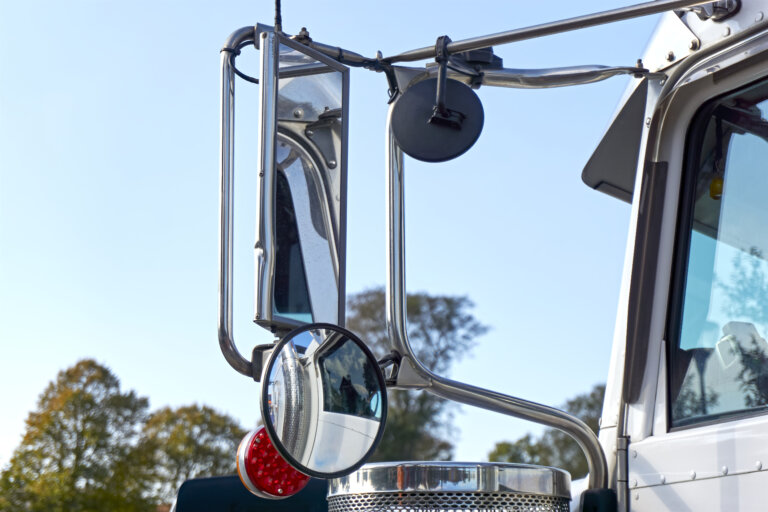With massive trucks come massive blindspots. 18-wheelers, tractor-trailers, and other oversized trucks have expansive blind spots which can prove extremely dangerous to all who enter them. A blind spot is, after all, a spot around a vehicle that is not visible to the driver, even when they use their mirrors.
While technological advancements, such as backup cameras and blind-spot monitors, have helped address the safety problems associated with blind spots, they are still very much a reality on the road. The blind spots on a large truck are even called “no zones” because they are zones that should be avoided at all costs. To help you and your loved ones stay safe on the road, let’s take a look at common trucking blind spots and how you can avoid them.
Common Truck Blindspots to Avoid
In a blind spot, the driver of the vehicle cannot see you. This means that they cannot take steps to avoid you when changing lanes or merging. It means they are not accounting for your presence when they speed up or brake. All of this can put you in danger. That is why it is critical that you be aware of blind spots and how to avoid them.
When it comes to large trucks, you have to worry about blind spots all around this oversized vehicle. Truck blind spots include:
- The front of the truck (extending out about 20 feet)
- The back of the truck (extending out about 30 feet)
- Along both sides of the truck
- Directly below the driver’s window
What is the best way to avoid these truck blind spots or “no zones”? Well, a solid starting point is to always stay aware of these blind spots and keep away from them. Now, we realize this can be a big ask as the no zones extend to large portions of the road. You may have to do something like pass the truck which would require entering the truck’s blind spot. This is fine. Just be mindful that you are entering a blind spot. Signal early to help ensure that the truck driver knows the maneuver you are about to engage in. Change lanes as quickly as is safely possible.
If you are unsure about whether or not you are in a truck’s blind spot, one good tip is to check to see if you can see the truck’s side mirrors. If you are unable to see the driver in the truck’s side mirror, it is more likely than not that they cannot see you either. If you cannot see the truck’s mirrors, you are in a blind spot and should get out of the no zone as soon as possible.
Another good thing to remember which can be helpful as we work to avoid truck blind spots is to be patient with these big vehicles. Trucks will sometimes need to move slower and often for good reason. Weighing in at about 80,000 pounds, drivers of these trucks need to be cautious and that will sometimes require reduced speeds. Be patient with slow-moving trucks. Keep your distance and avoid aggressive driving behaviors that could end up hurting more than helping. Do not tailgate the truck.
In fact, give plenty of room when you are driving in front of or behind a truck. With a large truck in front of you, it is likely you cannot see what is going on the other side of the truck. This means you will not be able to see if traffic slows down or stops or if there is a reason why the truck needs to brake. Giving yourself plenty of room between you and the truck will not only mean you stay out of the truck’s blind spot, but it will also give you the room you need to effectively break or otherwise maneuver should the need arise.
North Dakota Personal Injury Attorneys
We do our best to stay safe on the roads. Sometimes, despite our best efforts, we fall victim to the negligent driving of someone else. If you have been injured in an accident, reach out to the trusted personal injury team at Pringle & Herigstad. Contact us today.
